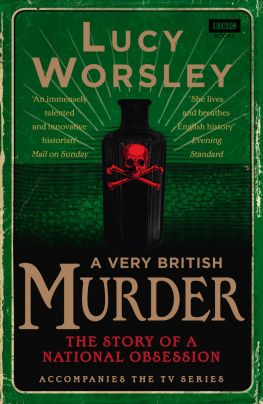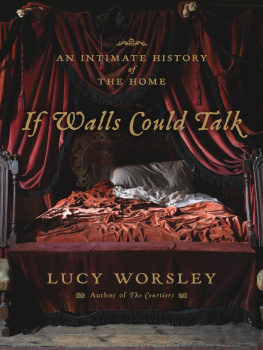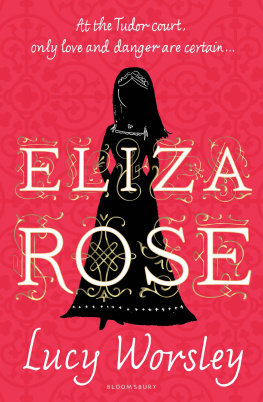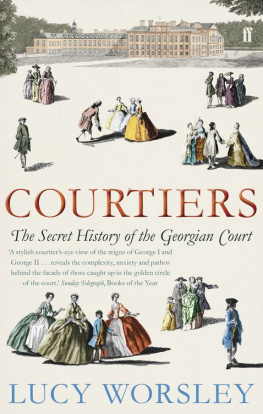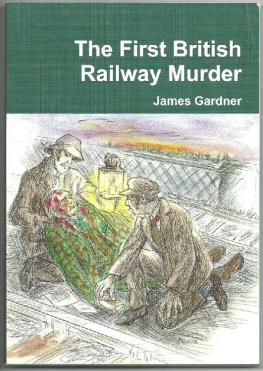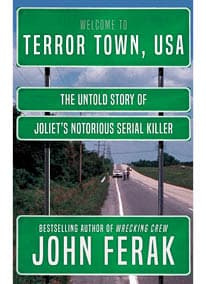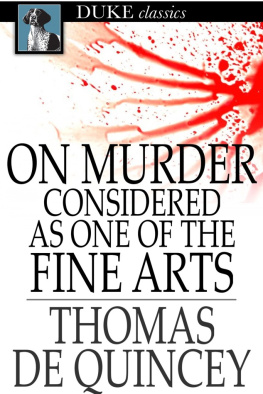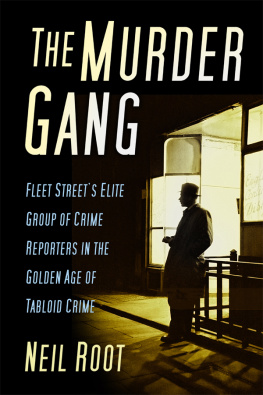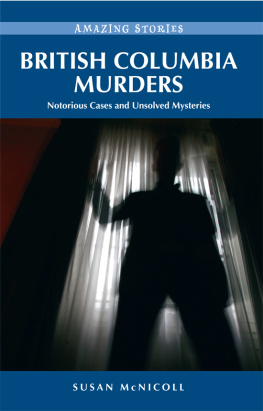Contents
About the Book
MURDER
A dark, shameful deed, the last resort of the desperate or a vile tool of the greedy. And yet, an endlessly fascinating storyline in popular entertainment. When did the British start taking such a ghoulish pleasure in violent death? And what does this tell us about ourselves?
In A Very British Murder, Lucy Worsley explores this phenomenon in forensic detail. She revisits notorious crimes such as the Ratcliffe Highway Murders, which caused a nation-wide panic in Regency England, and characters such as the murderess in black satin, Maria Manning, who helped bury her lover under the kitchen floor. Our fascination with these dark deeds would create a whole new world of entertainment, inspiring journalism and novels, plays and puppet shows, and an army of beloved fictional detectives, from Sherlock Holmes to Miss Marple. During the birth of modern Britain, murder somehow slipped into our national psyche and provided us with some of our most enduring and enjoyable pastimes.
A Very British Murder is a unique exploration of how crime was turned into art, and a riveting investigation into the British soul by one of our finest historians.
About the Author
Dr Lucy Worsley is a historian and Chief Curator of the Historic Royal Palaces, where she looks after the Tower of London and Hampton Court Palace among others. She has presented numerous television series, including Harlots, Housewives and Heroines for BBC4 and If Walls Could Talk for BBC1, for which she also wrote an accompanying book. Lucy has also written numerous other books, including Cavalier: A Tale of Chivalry, Passion and Great Houses.
This ebook is copyright material and must not be copied, reproduced, transferred, distributed, leased, licensed or publicly performed or used in any way except as specifically permitted in writing by the publishers, as allowed under the terms and conditions under which it was purchased or as strictly permitted by applicable copyright law. Any unauthorized distribution or use of this text may be a direct infringement of the authors and publishers rights and those responsible may be liable in law accordingly.
Version 1.0
Epub ISBN 9781448142002
www.randomhouse.co.uk
This book is published to accompany the television series entitled A Very British Murder, first broadcast on BBC4 in 2013.
Executive Producer: Michael Poole
Series Producer: Alastair Laurence
Directors: Gerry Dawson (Ep. 1); Rachel Jardine (Ep. 2); Matt Thomas (Ep. 3)
Researcher: Chloe Penman
1 3 5 7 9 10 8 6 4 2
Published in 2013 by BBC Books, an imprint of Ebury Publishing.
A Random House Group Company.
Text Lucy Worsley 2013
Lucy Worsley has asserted her right to be identified as the author of this Work in accordance with the Copyright, Designs and Patents Act 1988
All rights reserved. No part of this publication may be reproduced, stored in a retrieval system, or transmitted in any form or by any means, electronic, mechanical, photocopying, recording or otherwise, without the prior permission of the copyright owner.
The Random House Group Limited Reg. No. 954009
Addresses for companies within the Random House Group can be found at www.randomhouse.co.uk
A CIP catalogue record for this book is available from the British Library.
Hardback ISBN: 9781849906340
Commissioning editor: Albert DePetrillo
Project editor: Kate Fox
Copy editor: Richard Collins
Designer: Seagull Design
Production: Phil Spencer
To buy books by your favourite authors and register for offers visit www.randomhouse.co.uk
Theres the scarlet thread of murder running through the colourless skein of life, and our duty is to unravel it, and isolate, and expose every inch of it.
Sherlock Holmes
Introduction
It is Sunday afternoon, preferably before the war You put your feet up on the sofa, settle your spectacles on your nose, and open The News of the World. A cup of mahogany-brown tea has put you just in the right mood. The sofa cushions are soft, the fire is well alight, the air is warm and stagnant. In these blissful circumstances, what is it you want to read about? Naturally, about a murder.
George Orwell, Decline of the English Murder (1946)
IN HIS ESSAY Decline of the English Murder, George Orwell describes for us the most satisfying kind of killer. Ideally, hes a solicitor or doctor. Hes chairman of the local Conservative Party, or maybe a campaigner against the demon drink. He commits his crime out of passion for his secretary, but hes really driven by fear of public shame: its easier for him to poison his wife than to go through the public scandal of divorcing her. The archetypal murderer, in Orwells mind, was a devious but apparently quiet and respectable little man, rather like Dr Crippen.
But it wasnt ever thus. Around 1800, people asked to imagine a murderer would have come up with a much more heroic figure: a gallant highwayman, or perhaps a charismatic career criminal who repents on the gallows. They might even have laid eyes upon him themselves, at one of the many crowded and carnivalesque public hangings. And today, by contrast, our scariest and most enjoyable fictional murderers are much less cosy than Orwells. They are psychopathic serial killers, nihilistic, motiveless and utterly terrifying.
This isnt really a book about real-life murderers, or the history of crime although thats certainly part of the story. Instead, its an exploration of how the British enjoyed and consumed the idea of murder, a phenomenon that dates from the beginning of the nineteenth century and continues to the present day.
Perhaps appropriately, then, our two bookends will be writers. Well start in the late Georgian age, with Thomas De Quincey and his essay On Murder Considered as one of the Fine Arts. De Quincey was inspired by the so-called Ratcliffe Highway Murders of 1811, a multiple killing that saw the beginning of the gruesome correlation between lurid reporting of a crime and a massive spike in the sales of newspapers. Well end at the Second World War, and Orwells essay, in which he laments the declining quality of British murders and the rise of a different, more violent, less well-mannered, American-style criminal. Both writers, of course, were satirizing the business of enjoying a murder. And a large-scale, profitable and commercial business it was, too.
As the Victorian age wore on, biographies of murderers were among its publishing sensations. In 1849, as many as two and a half million people bought a rather rushed effort purporting to be the authentic memoirs of Maria Manning, the Lady Macbeth of Bermondsey, who had helped to kill her lover and bury him under her kitchen floor. In the middle of a cholera epidemic, Mannings story dominated the news. Her execution was attended by thousands, including Charles Dickens, who found it horrific but nevertheless used Maria as a model for his murderess in Bleak House.
Maria Mannings execution was one of the last female hangings to take place in public. But even after this date you could still meet murderers face-to-face in the pseudo-scientific Chamber of Comparative Physiognomy, otherwise known as the Chamber of Horrors, at Madame Tussauds gallery. Or else you could watch them re-enacting their crimes in street performances, on the London stage or in puppet theatres. Or you could even buy the merchandising, which included a particular favourite of mine ceramic ornaments depicting the houses where notable murders had taken place.

